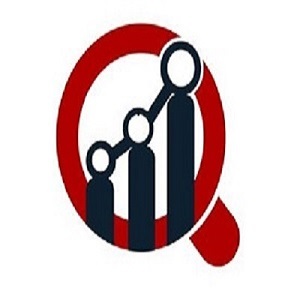Automated Cell Culture Equipment Market Estimated to Experience a Hike in Growth by Forecast 2022 - 2030
Market Highlights
Automated
Cell Culture Equipment Market is estimated to be valued at USD 4,906.53
Million by 2025 and is expected to register a CAGR of 12.04% during the
forecast period.
Automated cell culture equipment aids in maximizing
accuracy, precision, and minimizes time and consumable costs. The global
automated cell culture equipment market is witnessing a significant market
growth due to enhanced productivity and good quality of cell lines than manual
cell culture equipment.
The growing research & development (R&D) initiatives
in the pharmaceutical industry, rise in adoption of liquid handling systems,
and increasing prevalence of cancer and other infectious diseases are expected
to drive the growth of this market during the forecast period. However, high maintenance costs, lack of
awareness, and shortage of skilled professionals are restraining the growth of
the market. The increasing focus on regenerative medicine is likely to create
an opportunity for the growth of the global Automated Cell Culture Equipment
Market Forecast
Market Players
Market Research Future (MRFR) recognizes Tecan Trading AG,
Hamilton Company, Beckman Coulter, Inc., Pfizer Inc., Hitachi, Ltd, F.
Hoffmann-La Roche Ltd., Thermo Fisher Scientific Inc., Anton Paar GmBH,
Sartorius AG, Perkinelmer, Inc., and Siemens as the global automated
cell culture equipment market Key Players.
Segment Analysis
The Global Automated Cell Culture Equipment Market has been
segmented into lab automation type, product type, application, and end-user.
Based on the lab automation type, the global automated cell
culture equipment market has been segmented into modular automation and whole
lab automation. The modular automation segment accounted for the largest market
share of 67.20% in 2018, with a market value of USD 1484.16 million, which is
projected to register a CAGR of 11.68% during the forecast period. On the basis
of product type, the global automated cell culture equipment market has been
classified into consumables, equipment, and software.
Based on application, the global automated cell culture
equipment market is segmented into biopharmaceutical production, tissue
engineering, vaccine production, drug screening and development, gene therapy
& regenerative medicine, stem cell therapy, toxicity testing, diagnostics,
and others.
On the basis of end-user, the global automated cell culture
equipment market has been segmented into pharmaceutical & biotechnology
companies, research and academic institutes, and hospitals and diagnostic
laboratories, and others.
Regional Analysis
The global automated cell culture equipment market has been
segmented based on region, into the Americas, Europe, Asia-Pacific, and the
Middle East & Africa.
The existence of key market players, a well-developed
healthcare infrastructure, significant per capita healthcare spending, high
funding for research & development, focused research on cancer along with
grants from government healthcare agencies, and high adoption of advanced
medical technologies in the US and Canada are likely to support the dominance
of the Americas on this market during the forecast period. According to the
American Cancer Society, in 2019, an estimated 1,762,450 new cancer cases are
expected to be diagnosed. The US expenditure for cancer care was approximately
USD 147.3 billion in 2017. This high incidence of cancer cases and growing
investment in R&D to develop new treatment options is expected to drive the
American automated cell culture equipment market during the forecast period.
Key Findings of the Study
·
The Global Automated Cell Culture Equipment
Market is projected to reach over USD 4,906.53 Million by 2025 at a 04% CAGR
during the review period of 2019 to 2025.
·
Americas accounted for the largest market share
with the US being the major contributor to the growth of the market.
·
By lab automation type, modular automation
segment is projected to register the largest market share of 20% during the
forecast period. The rising adoption of modular laboratory automation is has
helped pre-clinical and clinical studies by optimizing, developing, and
streamlining the laboratory workflow.
·
Key manufacturers are adopting geographic
expansions, corporate acquisitions, and product launches as growth strategies.
Moreover, they are focusing on e-commerce for distribution.
Dysmenorrhea Treatment Market Research
Report- Global Forecast to 2030
Syringe and Needle Market Research Report -
Global Forecast to 2030
About Market Research Future:
At Market Research Future (MRFR), we enable our customers
to unravel the complexity of various industries through our Cooked Research
Report (CRR), Half-Cooked Research Reports (HCRR), Raw Research Reports (3R),
Continuous-Feed Research (CFR), and Market Research Consulting Services. MRFR
team have supreme objective to provide the optimum quality market research and
intelligence services to our clients. Our market research studies by
Components, Application, Logistics and market players for global, regional, and
country level market segments, enable our clients to see more, know more, and
do more, which help to answer all their most important questions.
Contact:
Market Research Future®
99 Hudson Street,5Th Floor
New York, New York 10013
United States of America
Phone:
+1 628 258 0071(US)
+44 2035 002 764(UK)
Email: sales@marketresearchfuture.com
Website: https://www.marketresearchfuture.com




Comments
Post a Comment